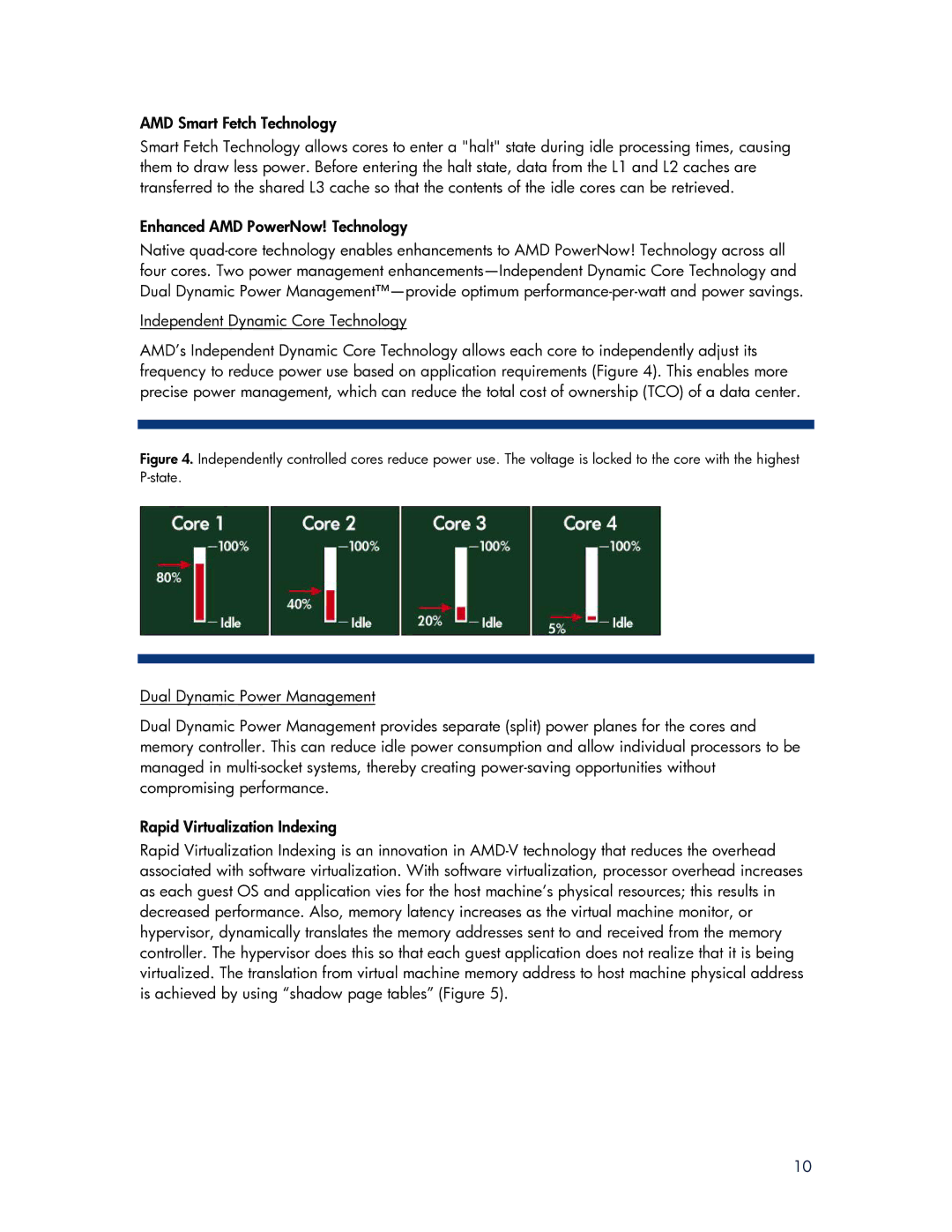
AMD Smart Fetch Technology
Smart Fetch Technology allows cores to enter a "halt" state during idle processing times, causing them to draw less power. Before entering the halt state, data from the L1 and L2 caches are transferred to the shared L3 cache so that the contents of the idle cores can be retrieved.
Enhanced AMD PowerNow! Technology
Native
Independent Dynamic Core Technology
AMD’s Independent Dynamic Core Technology allows each core to independently adjust its frequency to reduce power use based on application requirements (Figure 4). This enables more precise power management, which can reduce the total cost of ownership (TCO) of a data center.
Figure 4. Independently controlled cores reduce power use. The voltage is locked to the core with the highest P-state.
Dual Dynamic Power Management
Dual Dynamic Power Management provides separate (split) power planes for the cores and memory controller. This can reduce idle power consumption and allow individual processors to be managed in
Rapid Virtualization Indexing
Rapid Virtualization Indexing is an innovation in
10
